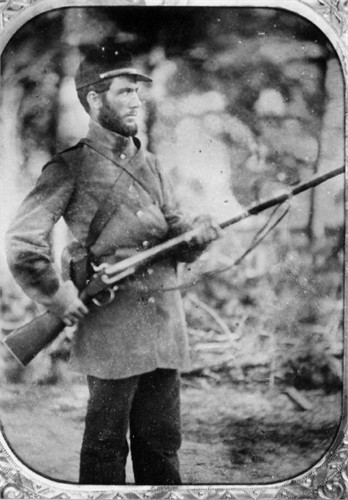Private Jacob Nathaniel “Nat” Raymer (c. 1861)
31 March 2022
Apparently a number of men of Company C of the 4th North Carolina had their portraits made by the same photographer on the same day. Here’s that of Private Nat Raymer. It is identical in pose and background to the one I found 3 days ago for Alfred Turner.
This photo, from his family, accompanied a collection of Raymer’s wartime letters to local newspapers collected in 2009 in Confederate Correspondent: The Civil War Reports of Jacob Nathaniel Raymer, Fourth North Carolina, edited by E.B. Munson.
Private Alfred Turner, 4th NC Infantry (c. 1861)
28 March 2022
A fine full-length photograph of Alfred Turner, 4th North Carolina Infantry as published by Greg Mast in his State Troops and Vounteers: A Photographic Record of North Carolina’s Civil War Soldiers.
Turner was captured at Boonsboro, MD on 15 September 1862, the day after the Regiment fought in the defense at Fox’s Gap on South Mountain. He was exchanged in November 1862, but never returned to his regiment.
Leopold Blumenberg (c. 1866)
27 March 2022
This imposing item is a plaster bust of Leopold Blumenberg, brevet Brigadier General of Volunteers and late Major, 5th Maryland Infantry. Painted to look like marble, it’s in the collection of the Jewish Museum of Baltimore.
Blumenberg commanded the 5th Maryland at Antietam and was seriously wounded near the Sunken Road/Bloody lane there on 17 September 1862.



